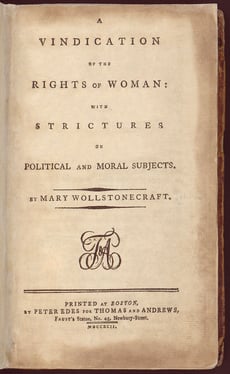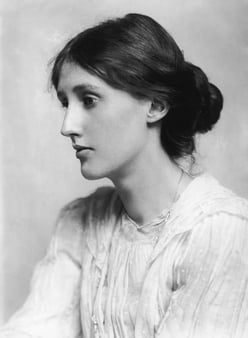Women’s literature has often been defined by publishers as a category of writing done by women. Though obviously this is true, many scholars find such a definition reductive. What makes the history of women’s writing so interesting is that in many ways it is a new area of study. The tradition of women writing has been much ignored due to the inferior position women have held in male-dominated societies. It is still not unheard of to see literature classes or anthologies in which women are greatly outnumbered by male writers or even entirely absent. The onus of women’s literature, then, is to categorize and create an area of study for a group of people marginalized by history and to explore through their writing their lives as they were while occupying such a unique sociopolitical space within their culture.
Before the introduction of women’s literary history colleges into academia and the renewed efforts of scholars to explore, recover, and preserve the literary tradition, women themselves were often the only champions of themselves, their contemporaries, and their predecessors. Mary Wollstonecraft‘s A Vindication on the Rights of Women (1792) is a landmark treatise that paved the way for many women after her to not only publish their works but also to engage in the overall critical discourse surrounding the issue of women in literature.
Occasionally there were men who spoke out alongside women. Some of the first recorded attempts to note women’s contributions to literature were catalogs published in the 18th century and were written by men. Feminead (1754) by John Duncombe and Memoirs of Several Ladies of Great Britain Who Have Been Celebrated for their Writing or Skill in the Learned Languages, Arts, and Sciences (1752) by George Ballard are two such manuscripts.
Yet for the most part, the majority of people interested in reading and responding to works written by women were other women. One prime example of this is The Female Advocate: A Poem Occasioned by Reading Mr Duncombe’s Feminead (1774) by Mary Scott. The poem was Scott’s first publication and is notable because it praises other women writers publishing at the time, including children’s writer Sarah Fielding and Anna Laetitia Barbauld, a writer whose political opinions eventually led to her being blacklisted after she published an inflammatory poem on her disagreement with the British Empire’s involvement in the Napoleonic wars.
In fact, only a renewed interest in women’s literary history led Barbauld to retake her place in the literary canon. Virginia Woolf’s A Room of One’s Own (1929) is often considered a driving force behind this movement. Considered by many to be Woolf’s master work, the long form essay is told through a fictionalized narrator and presents an argument on the necessity of both a metaphorical and literal “room” for women’s literature within the literary tradition. The book also served as the inspiration for the literary journal Room (formerly titled Room of One’s Own). The journal was launched in 1975 and specifically seeks to publish and promote works by female writers.
Second wave feminism in the ’70s and ’80s sparked a resurgence in forging a place for the works of women. Colleges began offering courses in women’s history and literature. Presses were founded that dedicated themselves to publishing lost or ignored works by women. In recent years a greater emphasis on intersectionality has encouraged exploration into the relationship between race, gender, religion, and class to even further prove the importance of the acknowledgment of the place of marginalized groups in literature.
Writers like Toni Morrison, Adrienne Rich, and Margaret Atwood whose work exemplify the need for acknowledgment and activism prove that there is a place for this dialogue and that a room of one’s own benefits not only women, but the literary tradition as a whole.


